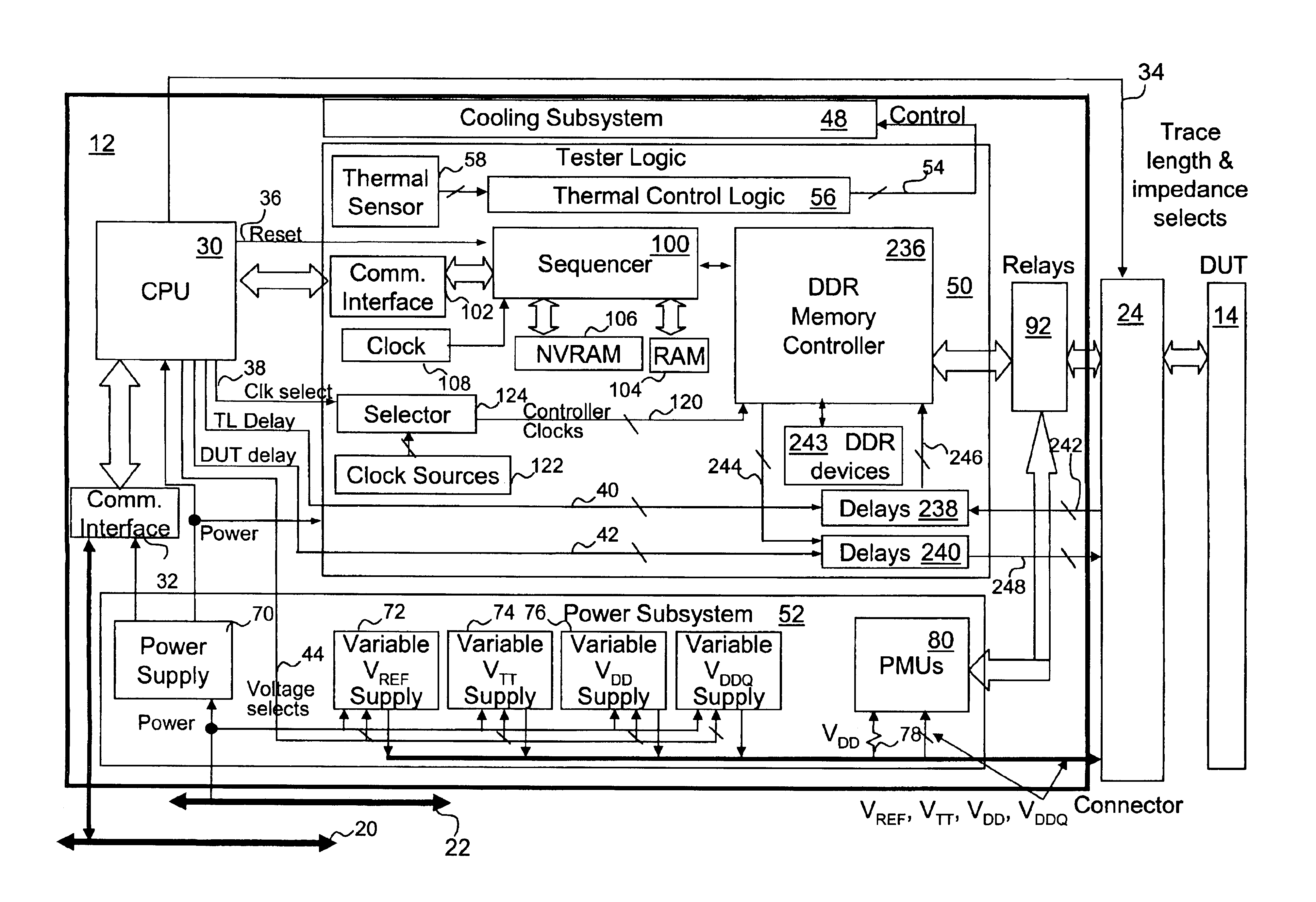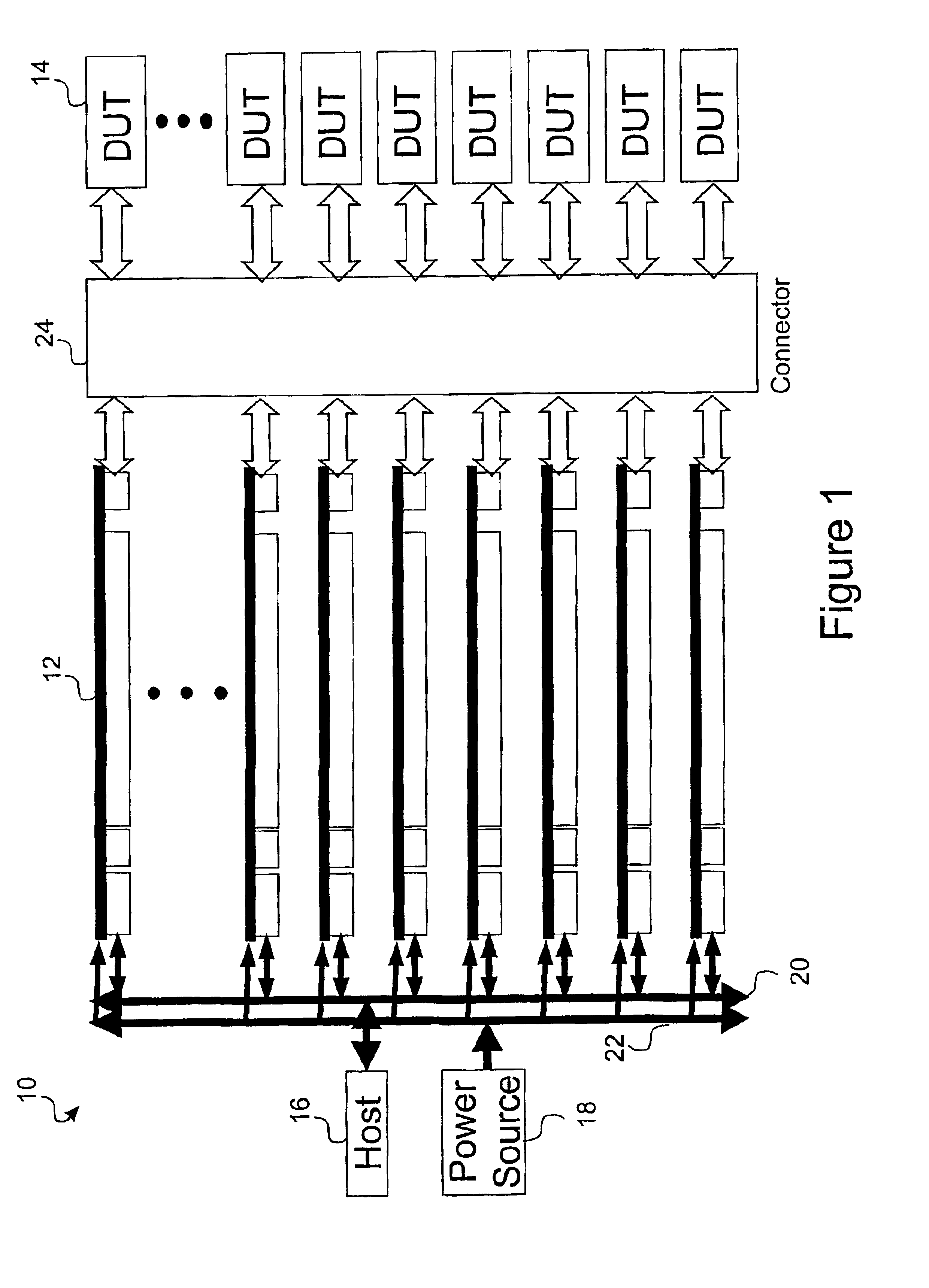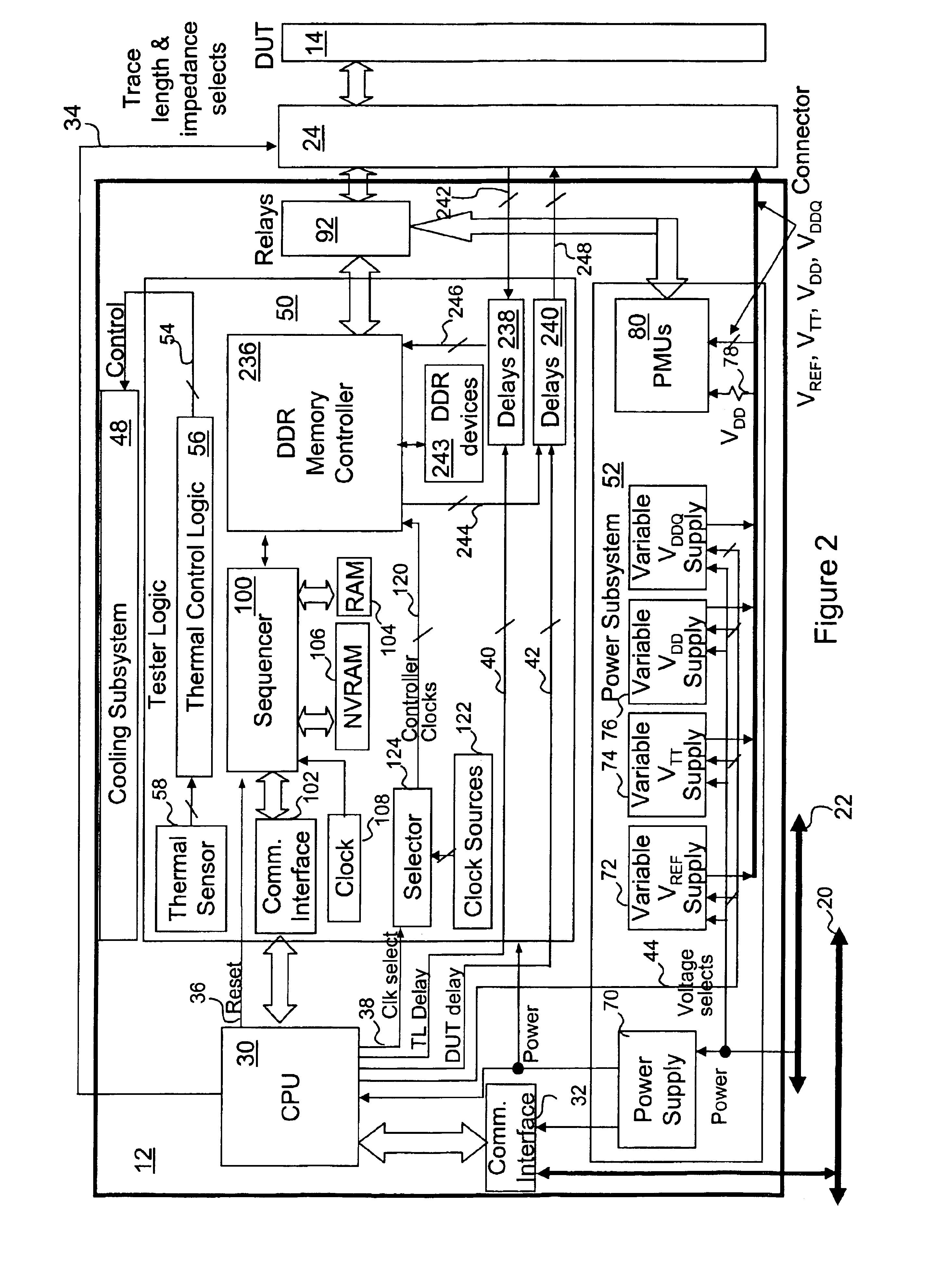Method and system for wafer and device level testing of an integrated circuit
a technology of integrated circuits and test methods, applied in the field of electronic devices, can solve the problems of requiring more sophisticated and expensive test equipment, affecting the accuracy of test results, and the failure of circuit cards themselves, so as to reduce the need for multiple types of testers, and avoid the effect of failur
- Summary
- Abstract
- Description
- Claims
- Application Information
AI Technical Summary
Benefits of technology
Problems solved by technology
Method used
Image
Examples
Embodiment Construction
[0037]With reference now to the figures and in particular with reference to FIG. 1, there is depicted a high-level block diagram of an illustrative embodiment of a memory tester in accordance with the present invention. As illustrated, memory tester 10 includes one or more (e.g., 64) tester logic boards 12 that each includes circuitry for testing one device under test 14. In the context of the present invention, a “device under test” (DUT) is defined as either a die on a semiconductor wafer, a packaged integrated circuit device, or a memory module.
[0038]Each tester logic board 12 is coupled to a host 16 and a power source 18 (e.g., 110 V AC) via a communication bus 20 and a power bus 22, respectively. Host 16, which may be a suitably programmed personal computer or a control processor, downloads test procedures and test parameters to and receives test results from tester logic boards 12 via communication bus 20.
[0039]As further illustrated in FIG. 1, each tester logic board 12 is co...
PUM
 Login to View More
Login to View More Abstract
Description
Claims
Application Information
 Login to View More
Login to View More - R&D
- Intellectual Property
- Life Sciences
- Materials
- Tech Scout
- Unparalleled Data Quality
- Higher Quality Content
- 60% Fewer Hallucinations
Browse by: Latest US Patents, China's latest patents, Technical Efficacy Thesaurus, Application Domain, Technology Topic, Popular Technical Reports.
© 2025 PatSnap. All rights reserved.Legal|Privacy policy|Modern Slavery Act Transparency Statement|Sitemap|About US| Contact US: help@patsnap.com



